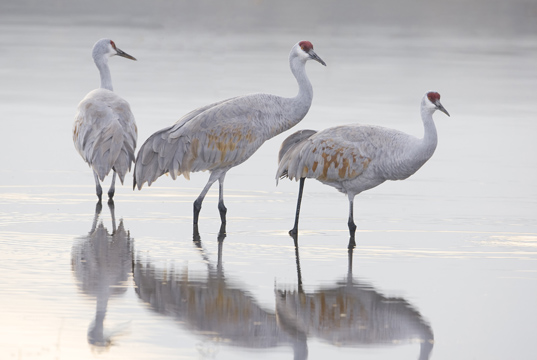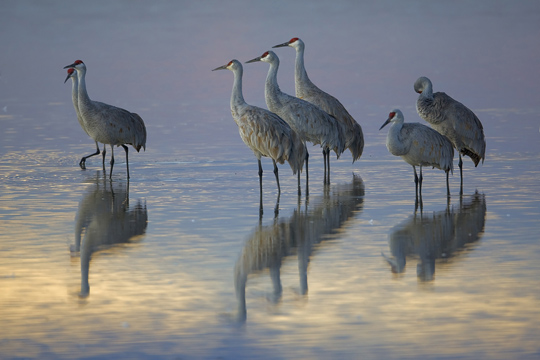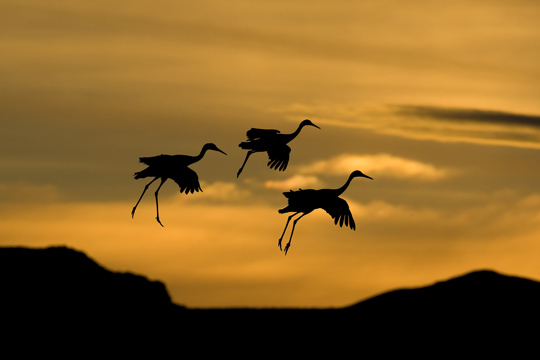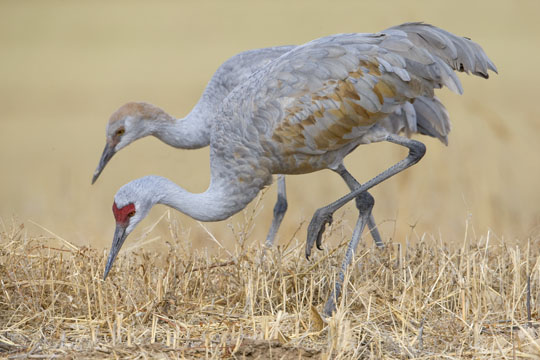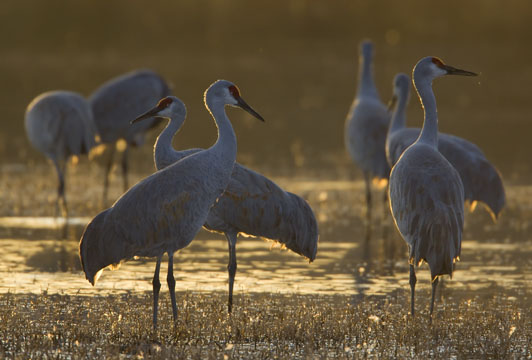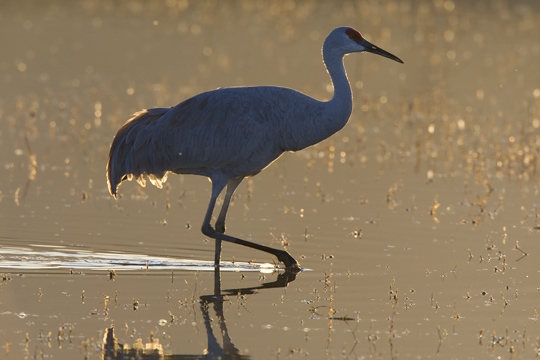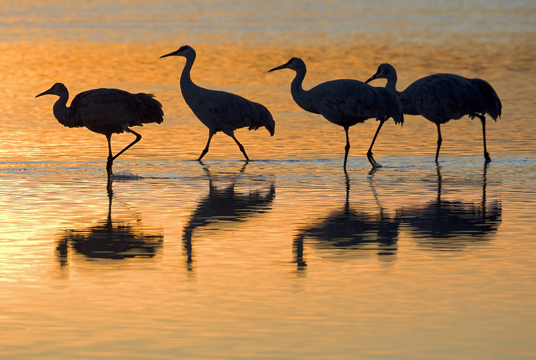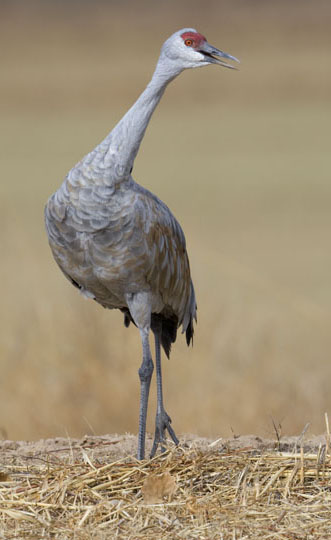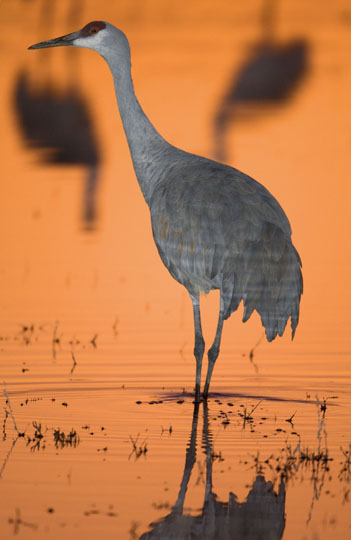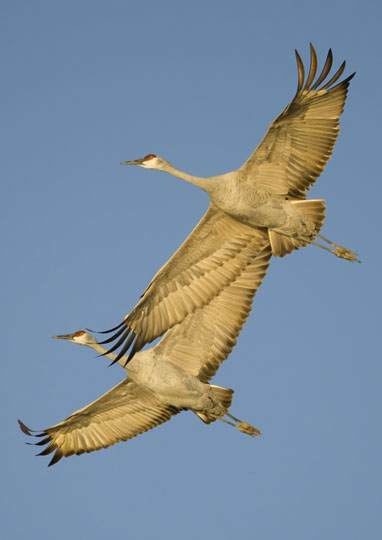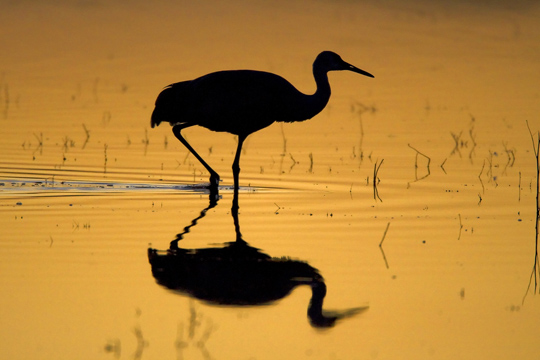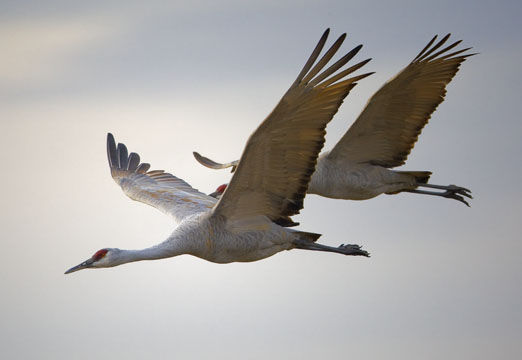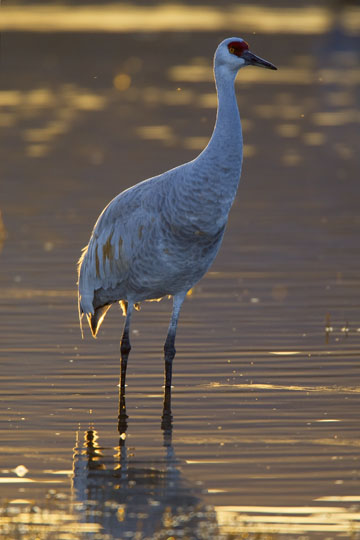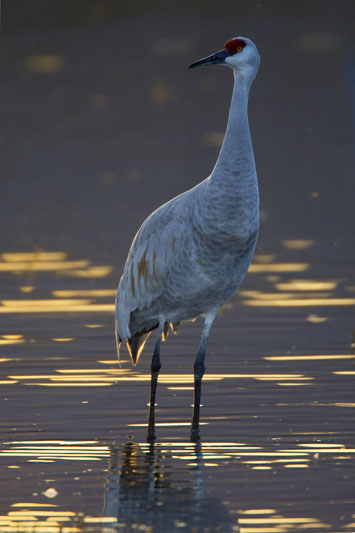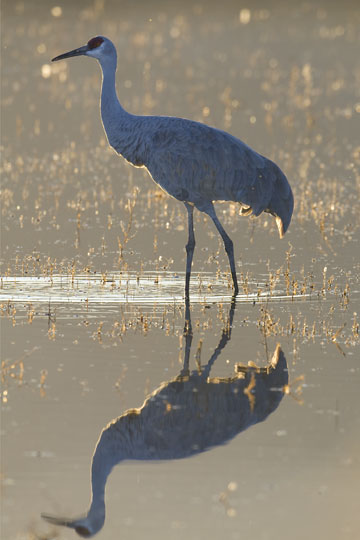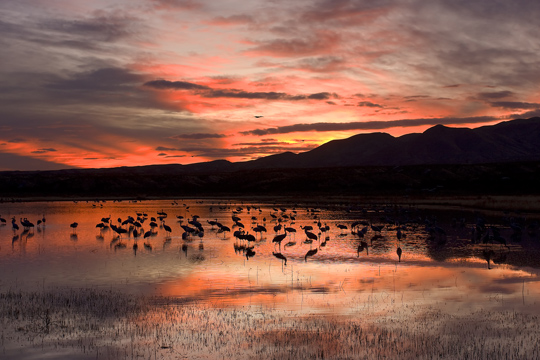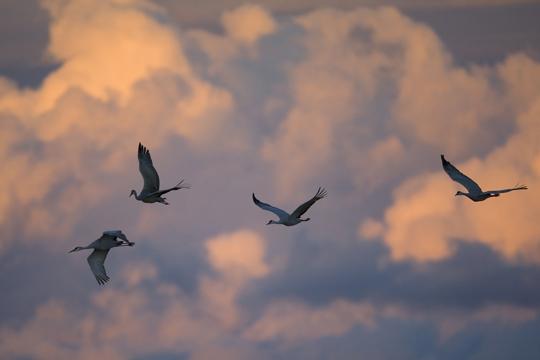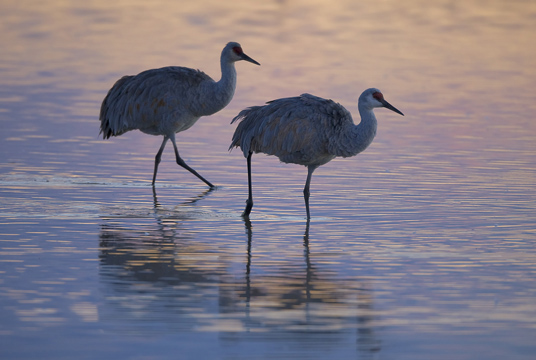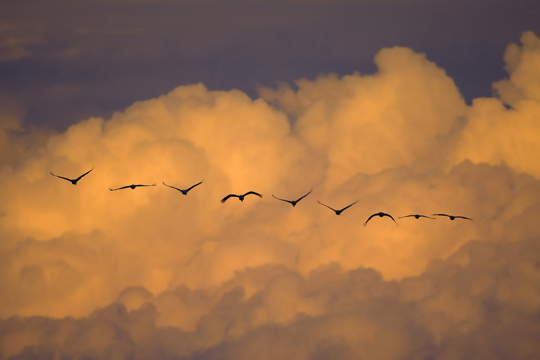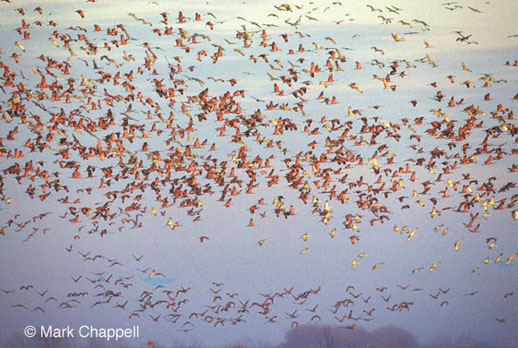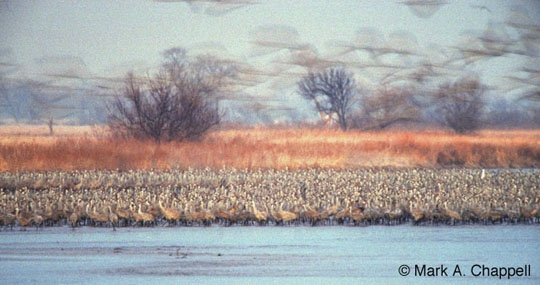|
Sandhill cranes of several subspecies are found across most of the North American continent, but for many birders and nature photographers, the premier place to see them is the Bosque del Apache refuge in New Mexico. In late fall and winter, roughly ten to fifteen thousand cranes gather on the refuge, roosting in pools at night, feeding in nearby fields during the day, and returning to their roosts at sunset. In November, the gathering of photographers and their big lenses along the 'Flight Deck' at dawn or the 'Crane Pools' at dusk is nearly as impressive as the birds themselves. I've been to Bosque four times and each visit has been as memorable as the others. All but the last two images on this page were taken in November 2008. Most of the birds pictured are adults; in the photo immediately below at right a brown-capped juvenile bird is feeding with its parent.
The last two photos come from later in the year and farther north. Each spring, upwards of half a million sandhill cranes pause their northward migration along a 100 km stretch of the Platte River in southern Nebraska. This spectacular gathering has become one of North America's premier wildlife viewing events and is appreciated by tens of thousands of visitors each year. The roosting flocks can be very large but photographing the birds is much more challenging than at Bosque del Apache. They disperse from their roosts in the river at dawn, when the light is pretty dim; during the day they feed on waste grain and insects in farm fields within 20-30 km of the Platte and are not very approachable. I took the two pictures at the bottom of the page just as the rising sun reached a flock as the cranes headed out for the day's feeding.
This page shows cranes on a misty morning in 2011. Other pictures of cranes at Bosque are here, here, and here; also, look at the Bosque del Apache page for photos from other visits. A few shots of cranes (and their offspring) in Alaska are here.
|
|
|


